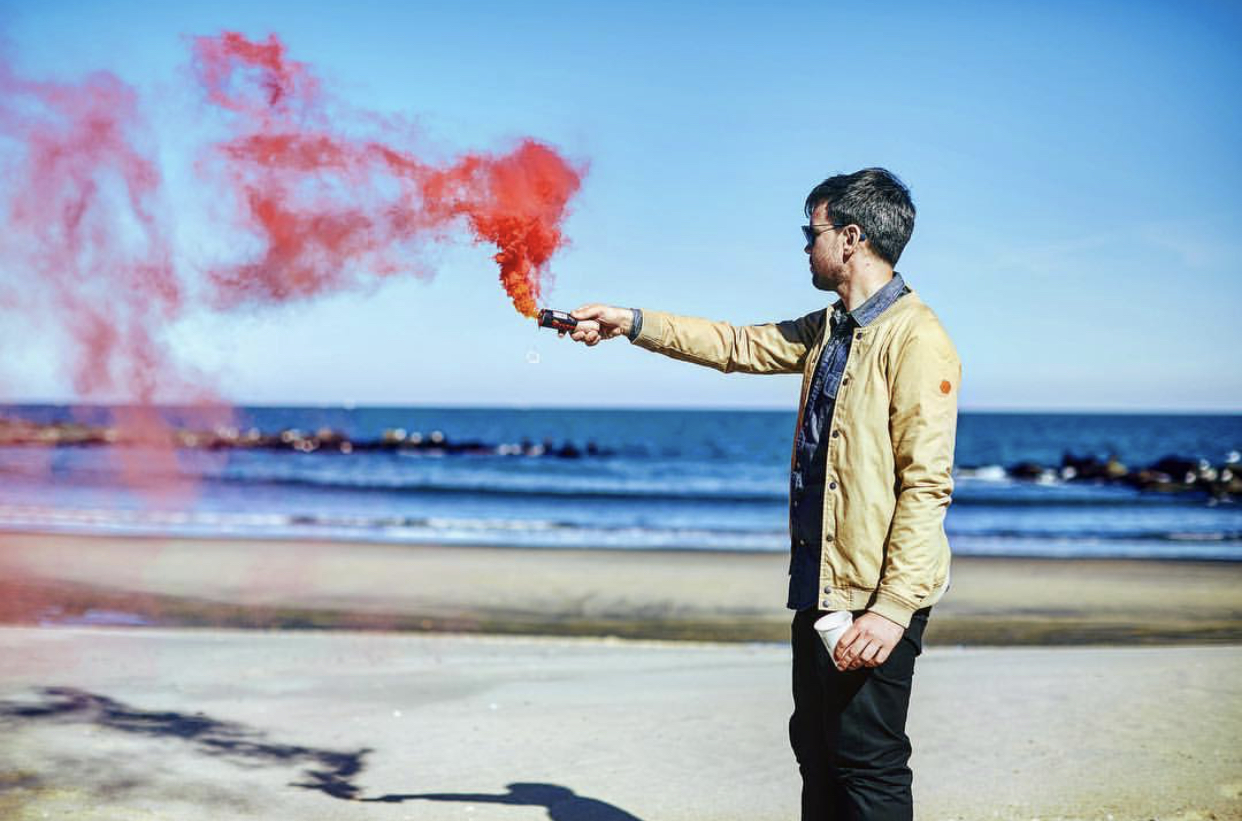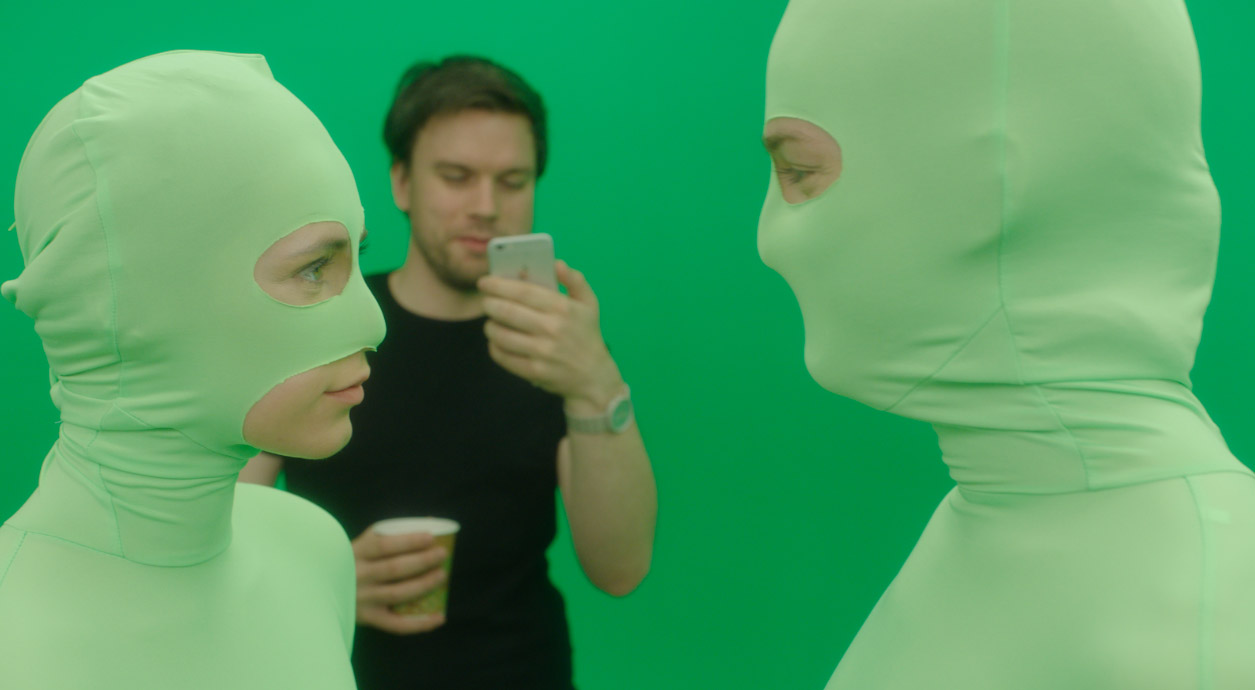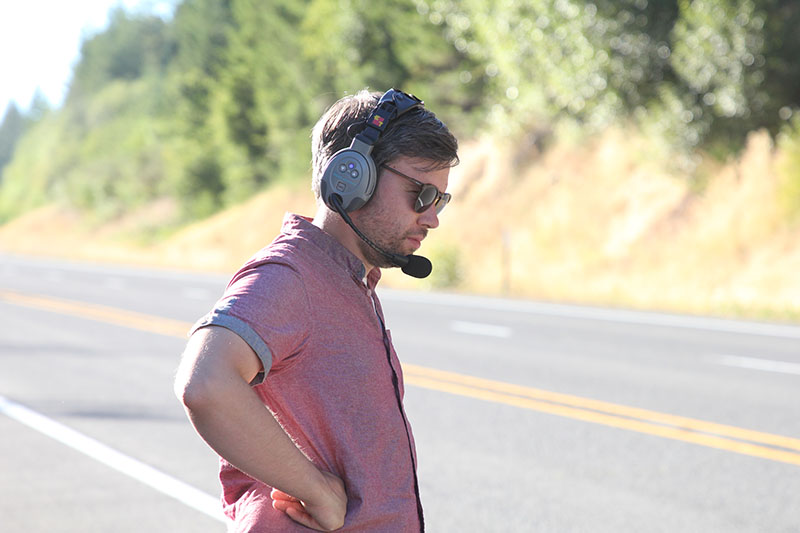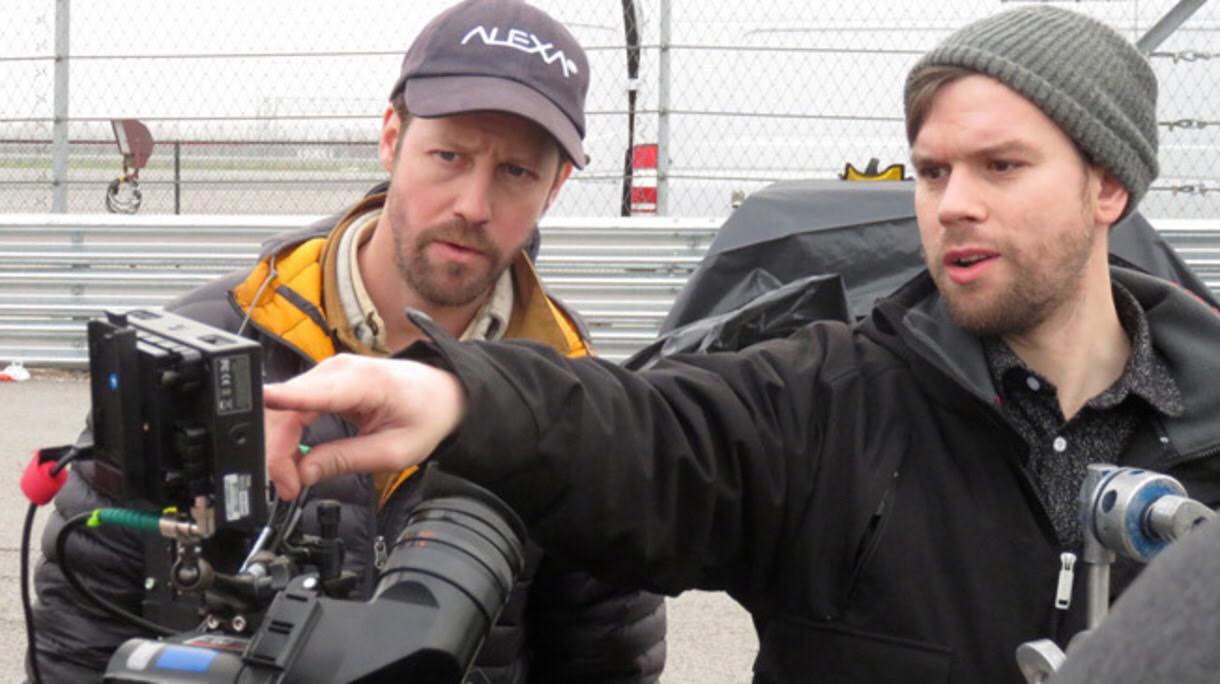In trying to summarize the work of Paul Trillo, the first word that pops in my head is “cerebral.” He makes films that tickle the brain…that mess with narrative and visuals in a way that feel ingenious, yet familiar—spontaneously inducing a “why-didn’t-I-think-of-that!” Eureka! moment. They’re visually enticing and shareable, but as his multiple Vimeo Staff Picks and Short of the Week selections attest, there’s meat there as well.
Trillo is an “internet filmmaker.” And, I don’t mean that in a pejorative sense. Rather, he’s making stuff that feels just so eminently watchable, topical, and buzzworthy. Something about his work —whether concept or aesthetic—compels you to want to share it on your social feeds: Hey, check out this drone film…or this one with the optical illusions! When it comes to presentation, few can match his style and technique.
As Paul embarks on a new short film series, Alt America, we wanted to sit down with him and chat about where he gets his inspiration, what he thinks of the short medium as a whole, and just how he comes up with his mind-bending ideas.

I think of you as a concept filmmaker in that all of your movies just mess with the brain in the best of ways. How would you describe your aesthetic?
In terms of trying to classify my work, I’d say it’s some sort of hybrid of experimental narrative or visually driven concept, depending on if it’s a commercial project or a short film. It really is about creating a set of parameters—a framework to work within and just really pushing those rules… almost to the point of breaking the concept.
“I just found myself attracted to ideas that are simple on the surface, but then you can use that simplicity to really dig into something deeper.”
When I was younger, I think I was resistant to conceptual arts because it felt like a lot of bullsh-t, or you could get away with a lot of bullsh-t. But, after school I kind of came around to it and realized that working within rules and working within constraints can be really creatively satisfying.
It’s about being simple too. I just found myself attracted to ideas that are simple on the surface, but then you can use that simplicity to really dig into something deeper.
A lot of your films are based on very cool and innovative visual ideas. Is that approach there from the start? Do you go: I want to make a “drone film” and then work backward? Or, does the visual approach stem from the core story idea?
It’s a really parallel process. In that case—the drone film—that was spawned by the idea of public meltdowns and public humiliation. Also, at the time, no one had done a single-take drone film, especially with dialogue. And, so, part of it is reverse engineering out of the gimmick,—where you’re like: “Okay. Cool. Single-tape, drone short film with dialogue. But, what’s the point?” And so, it was trying to find an idea that matched the visual technique, and there was something about the perspective of drones that had this kind of oddly voyeuristic and godlike perspective to it.
To me, if I was to make a single-take drone film that was a motorcycle shoot out, or whatever, yes, it would be fun to make, and it would be fun to watch, probably. But, is the technique necessarily elevating the story that you’re telling? Does the technique add to the atmosphere and the tone of the film?
How do you balance story with the technical execution? Is there ever a fear that the visual approach will detract from the message rather than enhance it?
Right. Like style over substance?
Yeah.
Absolutely. That’s the fear. Every time is like: “Am I just doing this because it looks cool, or trying to be the first to do something?”
It’s definitely in the back of your head as you’re making stuff. And, I think that’s part of the challenge as a storyteller: can you overcome the gimmick?

Is there ever a point, though, in a project, where you’re like: “Oh yeah, I’ve transcended that,” or is it always a guessing game for you?
I honestly don’t know until it’s out in the public. You have gut feelings about things but until it’s out in the public, you’re hoping that it has transcended the gimmick. Hopefully there’s a breakthrough that comes in the writing process where you can create an exhilarating feeling just via the words on the page. Because once the technique is set, and the rules are there, that’s kind of it. So, it’s about challenging yourself and the unexpected places the story goes.
Can you describe your basic filmmaking path. How did you start doing this? Did you go to Film School?
I think, for everyone, it’s stumbling down a path until you find the one that’s your own. I don’t think there’s a clear cut way once you’re out of film school, or even during film school. I had started teaching myself After Effects in high school and just doing stupid, pre-Tim & Eric. (but very Tim & Eric aesthetic) style stuff.
“If you set yourself up at the beginning to do the kind of work that you want to be doing, eventually people will recognize that.”
Then, I went to art school. All your interests start to filter until you understand what you’re doing. But, I think that is the intimidating thing, no matter what kind of artist you are, after your education you are like: “All right, well, what am I providing, or what am I bringing to the table as an artist that’s different?” What is your voice? What am I interested in making?”
And, I don’t know, it clicked one day when I was just messing around with green screen. I made a mistake with an effect and the mistake was interesting. I was like: “Oh, well that’d be interesting to use green screen in the wrong way.”
And, so, I started to take some of the conceptual learning from my school and apply it to some of the technical stuff I’ve taught myself, and make a few experimental music videos, combining these interests. It was really when Vimeo started to Staff Pick a couple things that it encouraged me to go down a certain path. It was the online community and seeing what gets traction, and what doesn’t. Seeing that get feedback and traction, it was like, “Okay, well, I guess this is my thing.”
It’s a slow process, and you start small. But, if you set yourself up at the beginning to do the kind of work that you want to be doing, eventually people will recognize that.

Can you describe your directorial style? Do you approach different projects (commercial, music videos, shorts) in a different way?
I think I’m the weird anomaly. It’s kind of like: “Oh, technical, complicated shit? Paul can do that!” That’s great, but it’s also can be a little bit limiting. And I think that’s what you have to kind of accept in the commercial world is that you’re being pitched in a very narrow way.
When brands come to you to direct commercial spots, how much creative leeway do you normally have?
I think I’ve been lucky enough to get to the point where people will trust me to do something I haven’t done before. But, because I’ve gone down this path, at least commercially, that is very technical, I’m not given dialogue-based or talking to camera type stuff. So, yeah, it’s very much like I’ve been put in a visual and technical box.
Just to go back to your earlier question about commercial work versus personal work, I do think the commercial stuff is pushed almost too far into technique-based stuff that it’s lost a little bit of humanity, and so I’m hoping to push my personal work to be more about character and the human condition, people making mistakes, and stuff like that…stuff that’s more nuanced. And, hopefully, not have to rely so much on technique going forward.
A lot of filmmakers are using shorts as “stepping stones” to features. Is that how you approach your short projects? Is this all building to something “bigger”? Or, are you satisfied with this insanely unique cannon of bite-size narratives you’ve created?
I’ve always viewed short films as their own medium rather than as a, “Oh, this is a piece that will lead to a bigger future.” And, I think maybe that goes hand in hand with how I approach things conceptually—this idea that I came up with is designed specifically to be a short film and fit within this timeline.
“I look at short films as a very specific art form where you can explore things that you couldn’t explore in a feature”
It’s its own self-contained little piece, and it’s not necessarily something you can just extrude times nine, and make into a 90 minute feature. I look at short films as a very specific art form where you can explore things that you couldn’t explore in a feature.
For example, I don’t think that the drone film—or any of the other shorts I’ve done— would work much longer than they are. They’re not meant to have legs beyond their original purpose. So, I think that does become more challenging when you have these meetings and people just want to green-light things that already exist. They want to see previous IP, previous short films, articles, short stories, that already are out there.
In your opinion, what makes a good online short?
I think the hardest thing for a short film to be is satisfying and it’s because so many leave you wanting more. To some people, that’s a good thing, but to me, I want a short film to be a full meal. I want to be like, “Oh, okay, I know why you made this, and it all came together.”
I mean, just short narrative stories, works of fiction, they generally have a purpose—it’s not like you go and write a short story hoping that you’ll extend it into a novel. They have a very specific purpose, and they’re satisfying…more so than being this snippet of something longer.
What’s your goal with your new short series, Alt America? Is it purely a reaction to the political climate?
I think that was absolutely the impetus. But, I am not necessarily a fan of anything heavy-handed. I like things with a little more nuance to it. I wanted to react to the current political climate in some way, but I didn’t want to just go and make a bunch of things that are preaching to the choir.
And so, I started to look at how politics are not just transforming the country, but transforming individual people—how people are starting to mutate because of politics, and what does it take to mutate, and how people are acting far different now than they were just five years ago, and why is that? And, kind of doing these character studies of people that have changed because of politics and the internet.
So, really, the concept behind the series is to just do these sort of one-off character pieces, looking at people—whether they’re on your side politically or not—from a human level.
I have a handful of them written. The next one, I’m hoping to shoot before the end of the summer. For me, it was also just a way to make simple films without having to throw in a bunch of frills or techniques. The concept is a little more overarching than it is visual.

Your shorts all look stunning and feature amazing talent. As an indie filmmaker myself, I have to ask the question: where does your funding come from?
I really just take what I make from commercials and put it into the short films. I’ve been fortunate, in the past, to have a few short films that I partnered with Vimeo and their brands to create. So, a handful have been paid for by brands, but another handful have just come straight out of the pocket.
So, you don’t have a rich producer sugar daddy that’s just giving you money?
Ha ha. I’m trying to find my sugar daddy now!
That’s the biggest barrier to entry: having money, and when I have an idea, I’m just anxious to get it done. Trying to apply for short film grants is incredibly competitive, and they delay the process. So, for this short film series, we’ll see how many I can really make, but I’m just anxious to get them out in the world, rather than waiting around for financing. But…I don’t know…maybe if I make three of them, someone will finally see it and want to give me a little bit of dough to create them.
I hope so!
Be sure to check out all of Paul Trillo’s amazing work on his Vimeo page.
 Ivan Kander
Ivan Kander